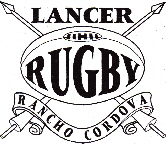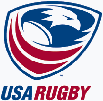








Board expressed the view that this was a matter for the several unions to decide on,
having regard to the wishes of their players."
Howard Marshall - of Haileybury, Oxford, Harlequins and the Barbarians and for years
the rugby correspondent of the Daily Telegraph - wrote in 1936 in an article entitled
What Rugger Means to Me: " Here I must make what is probably my last protest against
the numbering of players. I remember how I resented this cattle-branding when I was
playing myself, and my unholy delight when the numbered jerseys did not correspond
with the programs. Rugby football is not a game for such fripperies as numbering
and programs; it is not a game to be watched by any but those who have played it
and understand it."
In 1933 soccer players were numbered at the FA Cup Final for the first time. Everton,
who won, played Manchester City. Everton were numbered 1-11, Manchester City 12-
22. Celtic still refuse to wear numbers on their backs.
Sometimes teams have worn letters - to confuse pirate program sellers. The All
Blacks did that in 1921.
Confusing pirate program sellers was not the only reason.
There was also the belief that a single letter was less confusing than two numbers. The
having regard to the wishes of their players."
Howard Marshall -
the rugby correspondent of the Daily Telegraph -
What Rugger Means to Me: " Here I must make what is probably my last protest against
the numbering of players. I remember how I resented this cattle-
playing myself, and my unholy delight when the numbered jerseys did not correspond
with the programs. Rugby football is not a game for such fripperies as numbering
and programs; it is not a game to be watched by any but those who have played it
and understand it."
In 1933 soccer players were numbered at the FA Cup Final for the first time. Everton,
who won, played Manchester City. Everton were numbered 1-
22. Celtic still refuse to wear numbers on their backs.
Sometimes teams have worn letters -
Blacks did that in 1921.
Confusing pirate program sellers was not the only reason.
There was also the belief that a single letter was less confusing than two numbers. The

